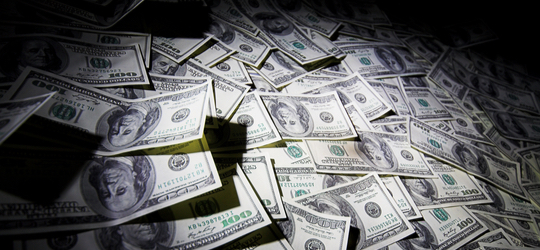The Government’s Greatest Con Job
Yesterday we documented our personal frustrations with contemporary technology.
Today we file a protest against contemporary money.
We begin with the “evolution” of United States currency…
We refer you to this $10 bank note, dated 1928:

In those antique days, a fellow could march into a bank, hand the clerk a slip of paper as illustrated above and demand the denominated amount in gold coin.
The system imposed a hard discipline upon banks… and held inflation in checkmate.
Federal Reserve banks were required to keep a 35% reserve of “gold or lawful money” on hand, lest they make a liar of the United States Treasury secretary — in this case the Hon. Andrew William Mellon.
In effect, the private citizen bound the banking system in golden handcuffs.
But one Great Depression, one New Deal and one world war later… we come now to a 1950 $10 bank note:

In appearance it is nearly a perfect twin to the 1928 model — with one infinitely telling exception.
Can you sniff it out?
The 1928 note bears this inscription:
“Redeemable in gold on demand at the United States Treasury or in gold or lawful money at any Federal Reserve Bank.”
But reads the 1950 version:
“This note is legal tender for all debts, public and private, and is redeemable in lawful money at the United States Treasury, or at any Federal Reserve Bank.”
The fine print disguises a vast swindle: The gold provision was stricken from the record.
The bankers had broken free of their golden handcuffs… and no longer could a private citizen bring them to honest account.
But what about “lawful money”? What is it?
In 1947, a certain gentleman — A.F. Davis by name — dispatched the following note to the United States Treasury, accompanied by a $10 note:
I am sending you herewith via registered mail one $10 Federal Reserve note. On this note is inscribed the following:
“This note is legal tender for all debts, public and private, and is redeemable in lawful money at the United States Treasury, or at any Federal Reserve bank.”
In accordance with this statement, will you send me $10.00 in lawful money?
The acting treasurer, M.E. Slindee, responded after this fashion:
Dear Mr. Davis,
Receipt is acknowledged of your letter of Dec. 9 with enclosure of one ten-dollar ($10.) Federal Reserve note.
In compliance with your request, two five-dollar United States notes are transmitted herewith.
And so Mr. Slindee began chasing his tail — what the logicians call circular reasoning.
In exchange for his $10 note, Mr. Davis was mailed two $5 bills bearing the same pledge to redeem in lawful money.
But this Davis fellow would not be so easily shooed away.
He returned one of the $5 bills, once again demanding lawful money in exchange:
Finally Mr. Slindee threw up the sponge:
Dear Mr. Davis:
… You are advised that the term “lawful money” has not been defined in federal legislation. It first came to use prior to 1933 when some United States currency was not legal tender but could be held by national banking associations as lawful money reserves.
Since the act of May 12, 1933, as amended by the Joint Resolution of June 5, 1933, makes all coins and currency of the United States legal tender and the Joint Resolution of Aug. 27, 1935, provides for the exchange of United States coin or currency for other types of such coin or currency, the term “lawful money” no longer has such special significance.
The $5 United States note received with your letter of Dec. 23 is returned herewith.
Beginning in 1963, all promises to redeem in lawful money were stricken from United States currency.
Here, in graphic detail, the devolution of American money:

Say what you will of paper money. But in one sense it is redeemable — if you’ll forgive the expression in the present context.
It in tangible. You can hold it in your hand, in your wallet, in your mattress.
It cannot be erased at the stroke of a key.
It is also anonymous. Once out of your hands, it leaves no trace.
None of these happy virtues apply to digital money…
Digital money has no tangible existence. It can disappear at a keystroke. The bank can freeze you out of it. And every transaction goes on your permanent record.
What is more, digital money removes all natural checks.
Even paper money files a claim on Earth’s resources — it is constituted of cotton and linen.
Meantime…
Digital money is the type of money bound to get itself into trouble.
Wispy as fog, slippery as oil, it is conjured into existence… as if by the magician’s wand.
And it can get around the world at electronic speeds.
It is also the ideal money for a government swollen to ghastly dimensions — its issue being unlimited in theory.
If paper money invites abuse… what about digital money?
Thus we speak our piece for lawful money — even paper money.
Regards,
Brian Maher
Managing editor, The Daily Reckoning



Comments: